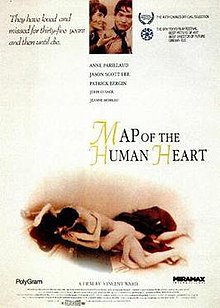
Nanook of the North is a 1922 American silent film that combines elements of documentary and docudrama/docufiction, at a time when the concept of separating films into documentary and drama did not yet exist. In the tradition of what would later be called salvage ethnography, the film follows the struggles of the Inuk man named Nanook and his family in the Canadian Arctic. It is written and directed by Robert J. Flaherty, who also served as cinematographer, editor, and producer.

Vincent Ward is a New Zealand film director, screenwriter and artist. His films have received international recognition at both the Academy Awards and the Cannes Film Festival.

Pitseolak Ashoona was an Inuk Canadian artist admired for her prolific body of work. She was also a member of the Royal Canadian Academy of Arts.

Anne Parillaud is a French actress who has been active since 1977. She is best known internationally for playing the title character in Luc Besson's film La Femme Nikita.

La Femme Nikita, also called Nikita in France, is a 1990 French-language action thriller film written and directed by Luc Besson. The film stars Anne Parillaud as the title character, a teen criminal who is convicted and sentenced to life imprisonment for murdering policemen during an armed pharmacy robbery. Her government handlers fake her death and recruit her as a professional assassin. After intense training, she starts a career as a killer, where she struggles to balance her work with her personal life. She shows talent at this and her career progresses until a mission in an embassy goes awry.

Clotilde Marie Pascale di Savoia also known as Princess Clotilde of Savoy is a French actress. She is married to Emanuele Filiberto di Savoia, a member of the House of Savoy and the grandson of Umberto II, the last king of Italy.

The Player is a 1992 American satirical black comedy mystery film directed by Robert Altman and written by Michael Tolkin, based on his own 1988 novel of the same name. The film stars Tim Robbins, Greta Scacchi, Fred Ward, Whoopi Goldberg, Peter Gallagher, Brion James and Cynthia Stevenson, and is the story of a Hollywood film studio executive who kills an aspiring screenwriter he believes is sending him death threats.
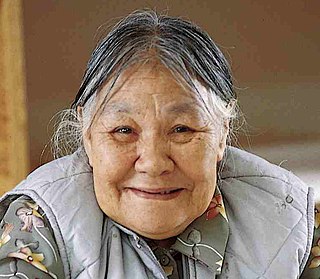
Kenojuak Ashevak,, is celebrated as a leading figure of modern Inuit art.

Skin Deep is a 1989 American romantic sex comedy film written and directed by Blake Edwards and starring John Ritter.

Untamed Heart is a 1993 American romantic drama film directed by Tony Bill, written by Tom Sierchio, and starring Christian Slater and Marisa Tomei. It tells the story of an unlikely romance between a young woman unlucky in love and a shy young man who has a heart defect. The original music score was composed by Cliff Eidelman, and includes a classical arrangement of "Nature Boy". A remix of the 1987 Suzanne Vega song "Tom's Diner" is featured in the opening scene.
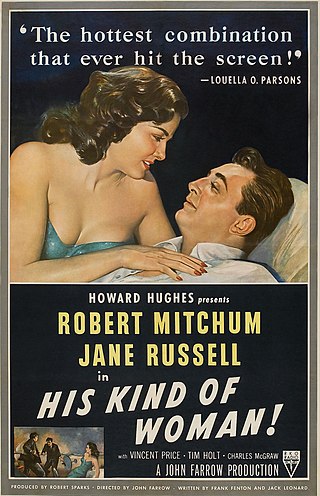
His Kind of Woman is a 1951 film noir starring Robert Mitchum and Jane Russell. The film features supporting performances by Vincent Price, Raymond Burr and Charles McGraw. The direction of the film, which was based on the unpublished story "Star Sapphire" by Gerald Drayson, is credited to John Farrow.

Peter Pitseolak (1902–1973) was an Inuk photographer, sculptor, artist and historian. Pitseolak was Baffin Island's first indigenous photographer.

Annie Pootoogook was a Canadian Inuk artist known for her pen and coloured pencil drawings. In her art, Pootoogook often portrayed the experiences of those in her community of Kinngait, in northern Canada, and memories and events from her own life.
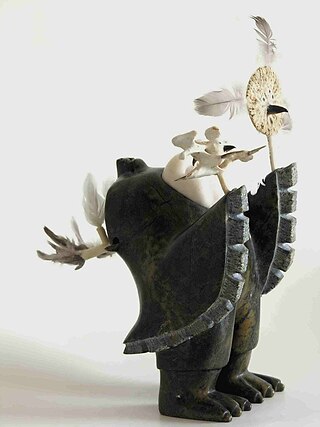
Inuit art, also known as Eskimo art, refers to artwork produced by Inuit, that is, the people of the Arctic previously known as Eskimos, a term that is now often considered offensive. Historically, their preferred medium was walrus ivory, but since the establishment of southern markets for Inuit art in 1945, prints and figurative works carved in relatively soft stone such as soapstone, serpentinite, or argillite have also become popular.
Paul Saltzman is a Canadian film and television producer and director. A two-time Emmy Award-recipient, he has been credited on more than 300 films, both dramas and documentaries.
Hugh Brody is a British anthropologist, writer, director and lecturer.

Shuvinai Ashoona is an Inuk artist who works primarily in drawing. She is known for her detailed pen and pencil drawings depicting northern landscapes and contemporary Inuit life.
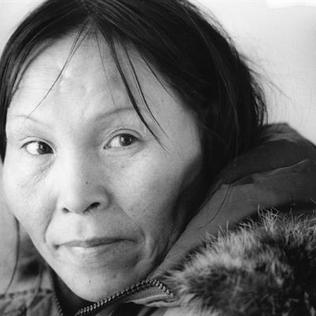
Napachie Pootoogook was a Canadian Inuit graphic artist.
Kiugak Ashoona was a Canadian Inuk artist renowned for his sculptural work and his expansive artistic portfolio. He experienced the longest career of any Cape Dorset artist, and is a member of the Order of Canada and the Royal Canadian Academy of Arts. In 1999, he was awarded the Canada Council Molson Prize for his outstanding lifetime contribution to the cultural and intellectual life of Canada.
